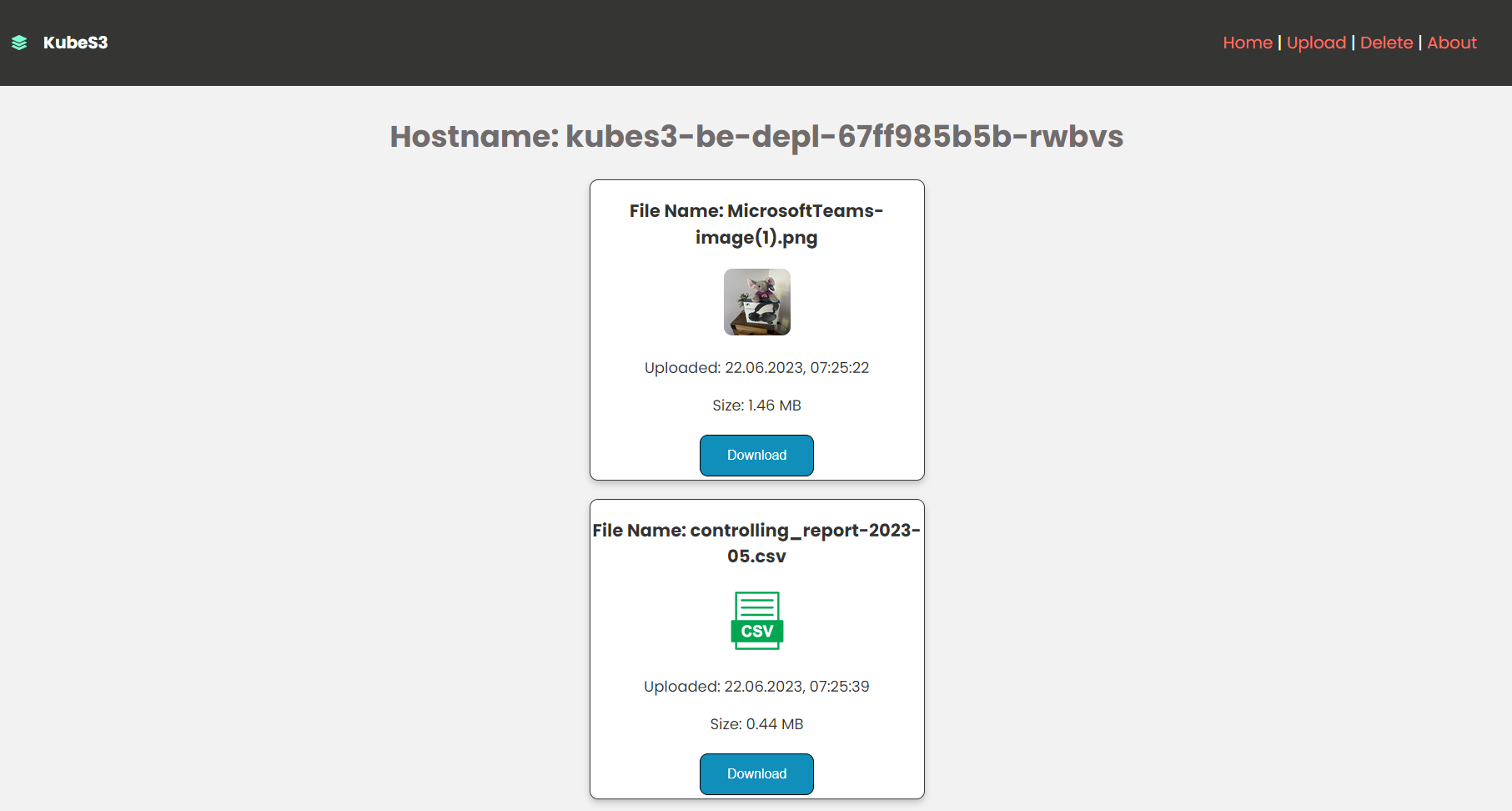This is an comprehensive project including some of the technologies used in software
engineering and DevOps.
It is based on my personal knowledge which I acquired by myself over time and learned from different projects.
The intention is to create a similar project in a workshop to get the attendees started with DevOps and SE.
For interacting with the Objects I implemented different ways. Instead of using multiple Buttons, I played around with Forms and FormData.
This is of course not the most efficient way ;)
- RestAPI
- Cloud-native
- Object-oriented-programming (OOP)
- Git
- CI/CD
- Docker / Containerization
- SPA
- Microservices
- Kubernetes
- Helm
- ReactJS
- Python
- Go
- Node.js
- npm / npx / pip
- JSON / YAML
- Reverse Proxy
- TLS/SSL
- ...
Cloud-native Fullstack-App for interacting with data from and to S3 storage via RestAPI and SPA. Written in Microservice-Architecture.
Uses ReactJS in the Frontend, Python with FastAPI in the Backend and MinIO for S3 Storage.
Also includes an independent Microservice for creating Thumbnails, written in Go.
Kubernetes-cluster with:
- StroageProvider (e.g. Longhorn / openEBS) installed & configured
- NGINX ingress controller installed
- cert-manager installed & configured
docker run -d -p 9000:9000 -p 9001:9001 -v my_s3_data:/data bitnami/minio:latest
If you dont pass ENVs the default user is minio and Password is miniosecret.
docker-compose build --no-cache
docker-compose up -d
*not up-to-date
kubectl apply -f k8s-manifests
I reworked the K8s-manifests to not be all in one file, but to be consolidated in the folder k8s-manifests.
Also I changed the Pod and PVC combination for the minio-Data to an StatefulSet.
Another change is to not pass the ConfigMap Key-by-Key instead use envFrom.
You can still use the old stack: kubectl apply -f k8s_stack-old.yaml
OUTDATED
Important: The newest Stack uses OpenEBS as storage provider and thus needs to be installed on the K8s-Cluster the application is deployed to.
helm repo add openebs https://openebs.github.io/charts
helm repo update
helm install openebs --namespace openebs openebs/openebs --create-namespace
Also make sure nginx ingress controller is installed:
helm repo add ingress-nginx https://kubernetes.github.io/ingress-nginx
helm repo update
helm install nginx-ingress ingress-nginx/ingress-nginx -n nginx-ingress --create-namespace
I also added this App in my helm-charts, which can be found on https://xamma.github.io/helm-charts.
To use the App on your K8s-Cluster, you need to have open-ebs and nginx-ingress installed.
helm repo add xammahelm https://xamma.github.io/helm-charts
helm repo update
helm search repo xammahelm
helm install kubes3-release xammahelm/kubes3 -n NAMESPACE --create-namespace
helm install kubes3-release xammahelm/kubes3 --set key=value --namespace my-namespace
helm uninstall my-webapp -n my-namespace
helm repo remove REPONAME
I tried to use best-practices regarding CI/CD and GitOps.
My CI pipeline is realized with GithubActions which build my Frontend- and Backend-ContainerImages and pushes them to the GHCR.
The CD part is taken care of from ArgoCD (running on K8s) which lets me deploy the Application directly to Kubernetes and keeps
it up-to-date and synced based on new commits.
You can also deploy from the Helm-Chart here.



